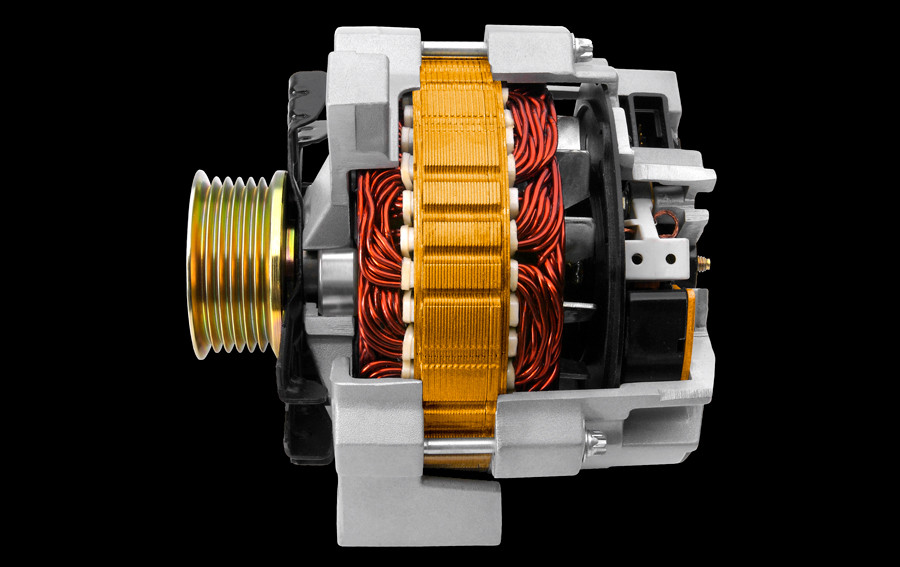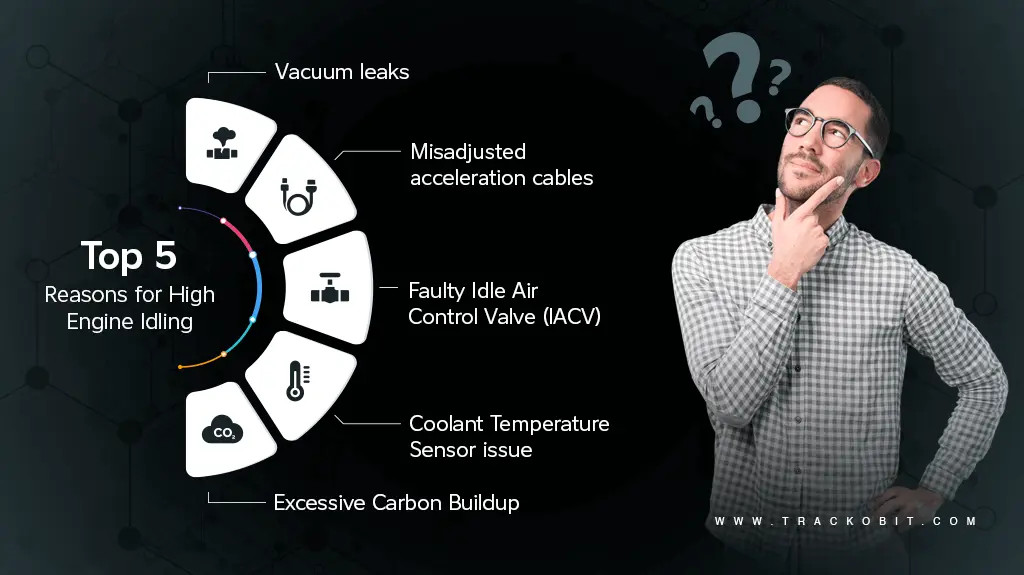How To Fix Fog In Car: A Comprehensive Guide
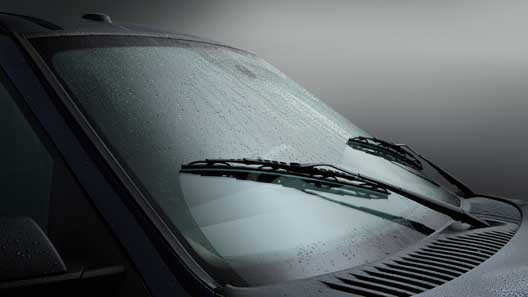
Fixing fog in your car is crucial for safe driving. This comprehensive guide from CARDIAGTECH.NET provides expert tips and solutions to clear foggy windows, ensuring optimal visibility and a secure driving experience. Discover practical methods to eliminate and prevent car fog, improving your on-road safety.
1. Understanding Car Fog Formation
Car fog happens when warm, moist air meets a cold surface, like your car’s windows. This causes condensation, turning into that annoying fog. It’s essential to understand this process to effectively combat it. Both internal and external factors contribute to this phenomenon, making it a common issue in varying weather conditions. According to a study by the National Highway Traffic Safety Administration (NHTSA), reduced visibility due to fog is a significant factor in car accidents, emphasizing the importance of addressing this issue promptly.
- Internal Factors: Breathing, wet clothes, and spills inside the car increase humidity.
- External Factors: Weather conditions like rain, snow, and high humidity outside the car.
 Car windshield fogging up due to condensation
Car windshield fogging up due to condensation
2. Immediate Solutions: How to Defog Your Car Quickly
When fog suddenly appears, quick action is needed. Here are some proven methods to rapidly defog your car and restore clear visibility, ensuring you can drive safely.
- Turn on Your Defroster: The defroster uses your car’s heating and ventilation system to blow warm, dry air onto the windshield, quickly evaporating the fog. According to AAA, this is the most effective method for clearing windshield fog.
- Use Air Conditioning: Running the AC helps remove moisture from the air inside the car. Set it to the “defrost” setting for maximum effectiveness.
- Adjust Temperature: Balancing the interior temperature with the exterior can reduce fog formation. Experiment with slightly warmer or cooler settings.
- Crack a Window: Opening a window slightly can introduce fresh air, reducing humidity and clearing fog. Even a small opening can make a big difference.
- Use a Microfiber Cloth: For a quick fix, wipe the inside of your windows with a clean, dry microfiber cloth. This helps to absorb moisture and clear the fog, providing immediate visibility.
3. Comprehensive Guide: Step-by-Step Defogging Techniques
For a detailed approach to defogging, follow these steps to ensure long-lasting clarity.
- Engage the Defroster: Start your car and turn on the defroster. Ensure the air is directed towards the windshield.
- Maximize Heat: Set the temperature to high. Warm air holds more moisture, aiding in evaporation.
- Activate AC: Turn on the air conditioning to dry the air. This works even in cold weather.
- Adjust Fan Speed: Increase the fan speed to circulate air effectively. A higher fan speed accelerates the defogging process.
- Open Windows Slightly: Crack the windows to let out humid air and bring in dry air from outside.
- Use Recirculation Wisely: Initially, turn off recirculation to expel moist air. Once the fog clears, you can use recirculation to maintain temperature.
4. Preventing Fog: Proactive Measures for Clear Visibility
Preventing fog from forming is more effective than reacting to it. Here’s how to keep your car windows clear.
- Keep Windows Clean: Regularly clean the inside and outside of your car windows with a quality glass cleaner. This removes dirt and grime that attract moisture. The American Cleaning Institute recommends using a microfiber cloth for streak-free cleaning.
- Use Anti-Fog Products: Apply anti-fog sprays or wipes to your windows. These products create a protective layer that prevents condensation. Brands like Rain-X offer reliable anti-fog solutions.
- Maintain HVAC System: Ensure your car’s heating, ventilation, and air conditioning (HVAC) system is functioning correctly. Replace the cabin air filter regularly to improve air quality and reduce moisture. According to the EPA, a clean HVAC system improves fuel efficiency and reduces emissions.
- Dry Wet Items: Remove wet umbrellas, clothes, and other items from your car to minimize moisture. These items can significantly increase humidity inside the vehicle.
- Use Desiccants: Place moisture-absorbing products like silica gel packs or commercial desiccants inside your car. These help to reduce humidity and prevent fog formation.
- Proper Ventilation: Ensure good airflow by occasionally opening windows, even when driving. Ventilation helps to equalize the temperature and humidity inside and outside the car.
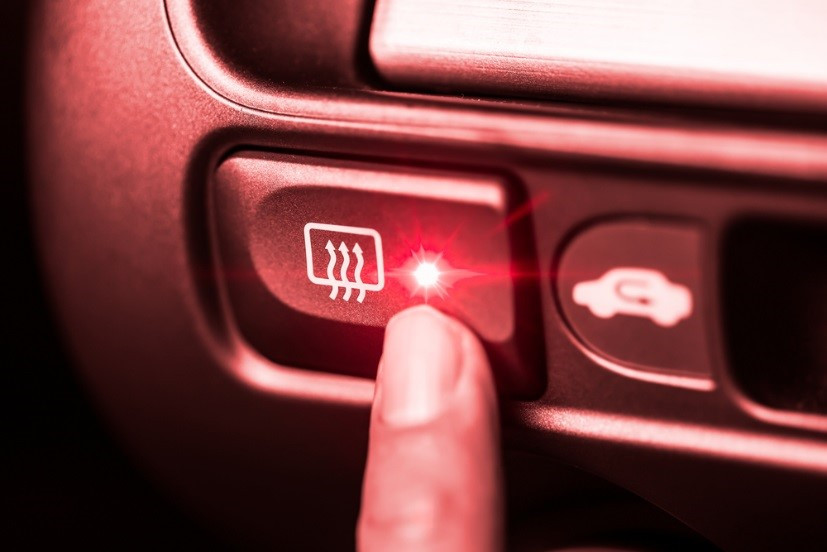 Using an anti-fog spray on a car windshield
Using an anti-fog spray on a car windshield
5. Advanced Techniques: Utilizing Car Features
Modern cars come equipped with features that can help manage and prevent fog. Learn how to use these to your advantage.
- Heated Windshield: If your car has a heated windshield, use it to quickly clear fog. This feature warms the glass, preventing condensation.
- Heated Mirrors: Heated mirrors clear fog and ice, improving side visibility. Activate them during cold or humid conditions.
- Rear Defroster: The rear defroster uses heating elements to clear fog and ice from the rear window, enhancing visibility.
- Climate Control System: Use the automatic climate control system to maintain a consistent temperature and humidity level inside the car.
6. DIY Solutions: Homemade Anti-Fog Remedies
If you prefer a more natural approach, try these homemade anti-fog solutions.
- Vinegar Solution: Mix equal parts of white vinegar and water in a spray bottle. Apply to the inside of your windows and wipe clean with a microfiber cloth. Vinegar helps to break down the film that causes fog.
- Shaving Cream: Apply a thin layer of shaving cream to the inside of your windows and wipe it off completely with a clean cloth. Shaving cream leaves behind a residue that prevents fog.
- Potato Trick: Cut a potato in half and rub the cut side on the inside of your windows. Wipe away the starch with a clean cloth. The starch creates a barrier against moisture.
- Soap Solution: Mix a small amount of dish soap with water and apply it to the inside of your windows. Wipe clean with a dry cloth. Soap can help to reduce surface tension, preventing fog.
7. Understanding HVAC Systems and Their Role in Defogging
Your car’s HVAC system is crucial for maintaining clear visibility. Here’s how to ensure it’s working efficiently.
- Regular Maintenance: Schedule regular maintenance for your HVAC system, including checking refrigerant levels and inspecting for leaks. A well-maintained system operates more efficiently.
- Cabin Air Filter Replacement: Replace the cabin air filter every 12,000 to 15,000 miles, or as recommended by your car’s manufacturer. A clean filter improves airflow and reduces allergens and pollutants.
- Check Air Vents: Ensure all air vents are clear and unobstructed. Blocked vents can reduce airflow and compromise the system’s effectiveness.
- Professional Inspection: Have your HVAC system professionally inspected at least once a year to identify and address potential issues.
8. Addressing Common Myths About Car Fog
There are many misconceptions about dealing with car fog. Let’s debunk some of the most common ones.
-
Myth: Wiping with Any Cloth Works
- Fact: Using just any cloth can leave streaks and worsen the problem. Microfiber cloths are best for streak-free cleaning.
-
Myth: Recirculating Air is Always Best
- Fact: Recirculating air can trap moisture inside the car. It’s best to use fresh air initially to remove humidity.
-
Myth: Heat Alone Will Solve the Problem
- Fact: While heat helps, it’s more effective when combined with air conditioning to dry the air.
-
Myth: Anti-Fog Products are Unnecessary
- Fact: Anti-fog products create a protective layer that significantly reduces condensation, making them a worthwhile investment.
9. The Science Behind Anti-Fog Products
Anti-fog products work by creating a thin, transparent layer on the glass surface that prevents water droplets from forming. These products typically contain surfactants that reduce surface tension, causing water to spread out into a thin film instead of beading up as fog. According to research published in the Journal of Applied Surface Science, these coatings can significantly improve visibility in humid conditions.
- Surfactants: Reduce surface tension of water.
- Hydrophilic Properties: Attract water to form a thin, clear film.
- Long-lasting Effect: Provide extended protection against fogging.
10. Safety First: Driving Tips for Foggy Conditions
Driving in foggy conditions requires extra caution. Here are some tips to ensure your safety.
- Slow Down: Reduce your speed and increase your following distance. Fog reduces visibility and reaction time.
- Use Low Beams: Use low beam headlights. High beams can reflect off the fog and reduce visibility further.
- Turn on Fog Lights: If your car has fog lights, use them. Fog lights are designed to provide better visibility in foggy conditions.
- Stay Alert: Pay close attention to your surroundings and be prepared to stop suddenly.
- Use Windshield Wipers: Keep your windshield wipers on to clear any condensation or moisture.
- Listen for Traffic: Open your window slightly to listen for other vehicles, especially at intersections.
- Pull Over if Necessary: If visibility is severely limited, pull over to a safe location and wait for the fog to clear.
11. Long-Term Prevention: Maintaining a Moisture-Free Car Interior
Maintaining a dry car interior is essential for preventing fog.
- Check for Leaks: Inspect your car for leaks, especially around windows and doors. Repair any leaks promptly to prevent moisture buildup.
- Proper Sealing: Ensure windows and doors are properly sealed to prevent water from entering the car.
- Regular Cleaning: Regularly clean your car’s interior to remove dirt and debris that can trap moisture.
- Avoid Wet Items: Avoid leaving wet items inside your car. If you must transport wet items, place them in a sealed container or bag.
- Use Floor Mats: Use floor mats to protect your car’s carpeting from moisture. Clean or replace floor mats regularly.
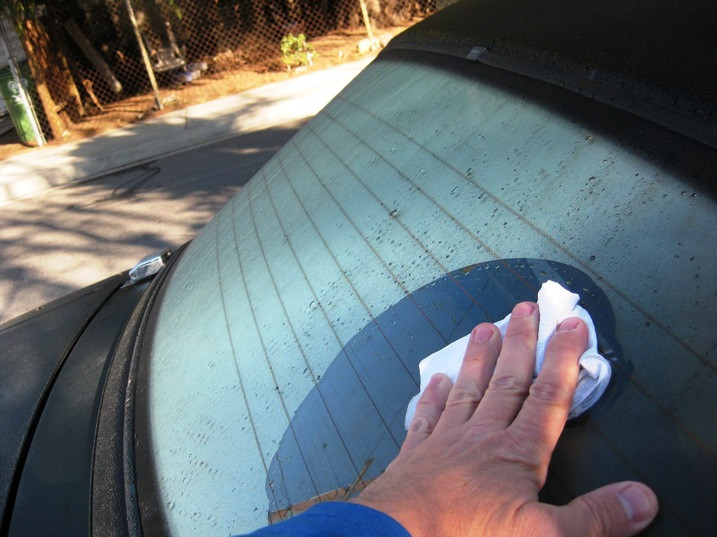 Using a microfiber towel to clean car windows
Using a microfiber towel to clean car windows
12. Understanding Regional Differences in Fog Prevention
Fog conditions vary by region, so your prevention strategies should be tailored accordingly.
- Coastal Areas: High humidity requires more frequent use of anti-fog products and desiccants.
- Cold Climates: Use of heated windshields and mirrors is crucial, along with regular HVAC maintenance.
- Desert Regions: While fog is less common, maintaining a clean interior to reduce dust and moisture is important.
- Mountainous Areas: Rapid temperature changes can lead to frequent fogging, necessitating quick defogging techniques.
13. The Role of Car Detailing in Fog Prevention
Professional car detailing can help prevent fog by ensuring your car’s interior is clean and dry.
- Interior Cleaning: Professional detailing includes thorough cleaning of windows, carpets, and upholstery, removing dirt and moisture.
- Glass Treatment: Detailers can apply specialized glass treatments that repel water and prevent fogging.
- Ozone Treatment: Ozone treatment can eliminate mold and bacteria that contribute to moisture and odors.
- Sealing and Protection: Detailing includes sealing windows and doors to prevent leaks and moisture intrusion.
14. Common Car Problems That Can Lead to Fogging
Certain car problems can exacerbate fogging issues.
- Leaking Heater Core: A leaking heater core can release coolant into the car’s interior, increasing humidity.
- Clogged Drain Vents: Clogged drain vents in the HVAC system can trap moisture, leading to fogging.
- Faulty Weather Stripping: Damaged or worn weather stripping can allow water to enter the car, increasing humidity.
- Sunroof Leaks: Leaks around the sunroof can introduce moisture into the car’s interior.
15. Staying Ahead: Future Technologies in Fog Prevention
The automotive industry is continuously developing new technologies to combat fog.
- Smart Windows: Smart windows use electrochromic technology to adjust tint and transparency, reducing condensation.
- Advanced HVAC Systems: Future HVAC systems will use sensors to detect humidity levels and automatically adjust temperature and airflow.
- Self-Cleaning Glass: Self-cleaning glass uses a special coating that repels water and dirt, reducing the need for manual cleaning.
- Improved Defrosters: Next-generation defrosters will use more efficient heating elements and airflow patterns to clear fog quickly and effectively.
16. Tools and Equipment for DIY Defogging
Having the right tools and equipment can make defogging easier and more effective.
- Microfiber Cloths: Essential for streak-free cleaning.
- Glass Cleaner: Use a high-quality glass cleaner for both interior and exterior windows.
- Anti-Fog Spray: Choose a reliable anti-fog spray for long-lasting protection.
- Squeegee: Useful for removing excess moisture from windows.
- Wet/Dry Vacuum: Ideal for removing moisture from carpets and upholstery.
- Desiccants: Place moisture-absorbing products inside the car to reduce humidity.
17. How to Choose the Right Anti-Fog Product
Selecting the right anti-fog product depends on your needs and preferences.
- Type: Choose between sprays, wipes, and gels. Sprays are easy to apply, while wipes offer convenience.
- Ingredients: Look for products with non-toxic and environmentally friendly ingredients.
- Longevity: Consider how long the product lasts per application. Some products offer protection for several weeks.
- Reviews: Read customer reviews to get an idea of the product’s effectiveness and ease of use.
- Price: Compare prices to find a product that fits your budget.
18. Understanding the Legal Aspects of Driving with Fog
Driving with excessive fog can have legal consequences.
- Visibility Laws: Many states have laws regarding minimum visibility requirements for driving.
- Negligence: Driving with impaired visibility due to fog can be considered negligence in the event of an accident.
- Equipment Requirements: Some jurisdictions require vehicles to have working defrosters and headlights.
- Penalties: Violating visibility laws can result in fines and points on your driving record.
19. The Environmental Impact of Defogging Practices
Consider the environmental impact of your defogging practices.
- Eco-Friendly Products: Choose anti-fog products with environmentally friendly ingredients.
- Reduce Chemical Use: Use homemade solutions or natural alternatives whenever possible to reduce chemical use.
- Proper Disposal: Dispose of used cleaning cloths and containers properly to prevent pollution.
- Conserve Energy: Use your car’s defroster and HVAC system efficiently to conserve energy.
20. Debunking Myths About Driving in Fog
Let’s clarify some common misconceptions about driving in fog to enhance your safety.
-
Myth: High Beams Improve Visibility
- Fact: High beams reflect off the fog, reducing visibility. Use low beams instead.
-
Myth: Following Closely Improves Safety
- Fact: Increase your following distance to allow more time to react.
-
Myth: Fog Only Occurs in Certain Areas
- Fact: Fog can occur in any area with the right weather conditions.
-
Myth: All Fog is the Same
- Fact: Fog density can vary, requiring different driving adjustments.
21. Real-Life Scenarios: How to Handle Unexpected Fog Situations
Be prepared for unexpected fog encounters with these practical strategies.
- Sudden Fog Patches: Slow down immediately and turn on your fog lights if you encounter a sudden fog patch.
- Fog at Night: Reduce your speed and use low beams. Be extra cautious for pedestrians and cyclists.
- Fog on Bridges: Bridges tend to be colder, increasing the likelihood of fog. Slow down and stay alert.
- Fog Near Water: Areas near bodies of water are prone to fog. Be prepared for reduced visibility.
22. The Psychology of Driving in Fog
Understanding the psychological effects of driving in fog can help you stay calm and focused.
- Stress Reduction: Take deep breaths and stay calm to reduce stress and anxiety.
- Focus Enhancement: Concentrate on the road and avoid distractions.
- Patience: Be patient and avoid aggressive driving maneuvers.
- Awareness: Stay aware of your surroundings and anticipate potential hazards.
23. Community Tips: Sharing Fog Prevention Strategies
Share and learn from community experiences to enhance your fog prevention knowledge.
- Online Forums: Participate in online forums and share your tips and experiences.
- Social Media: Follow automotive communities on social media for advice and updates.
- Local Workshops: Attend local workshops and seminars on car maintenance and safety.
- Car Clubs: Join a car club to connect with other enthusiasts and share knowledge.
24. Staying Informed: Resources for Fog-Related Weather Updates
Stay updated on fog-related weather conditions to plan your trips accordingly.
- Weather Apps: Use weather apps to monitor fog forecasts and visibility conditions.
- Local News: Watch local news broadcasts for fog advisories and warnings.
- Online Weather Services: Use online weather services for detailed fog maps and predictions.
- Highway Agencies: Check highway agency websites for fog-related road closures and advisories.
25. How CARDIAGTECH.NET Can Help You Maintain Clear Visibility
At CARDIAGTECH.NET, we understand the challenges you face as automotive technicians. Our commitment is to equip you with top-tier tools and solutions that not only enhance your efficiency but also ensure your safety. Imagine the satisfaction of completing jobs faster, with greater accuracy, and fewer physical demands.
We offer a wide range of diagnostic tools and equipment designed to help you maintain optimal visibility and safety in all driving conditions. From advanced HVAC system analyzers to professional glass cleaning kits, we have everything you need to combat fog and ensure clear vision.
Address: 276 Reock St, City of Orange, NJ 07050, United States
WhatsApp: +1 (641) 206-8880
Website: CARDIAGTECH.NET
26. Actionable Steps: Your Fog Prevention Checklist
Use this checklist to ensure you’re taking all necessary steps to prevent fog.
- Clean Windows Regularly: ☐
- Apply Anti-Fog Product: ☐
- Maintain HVAC System: ☐
- Check for Leaks: ☐
- Use Desiccants: ☐
- Dry Wet Items: ☐
- Stay Informed on Weather: ☐
- Drive Safely in Fog: ☐
- Professional Detailing (Optional): ☐
- Inspect and Replace Wiper Blades: ☐
27. Maximizing Your Car’s Defogging System Performance
Ensure your car’s defogging system is always at its best.
- Regular Inspections: Check the defroster and defogger functions during routine maintenance.
- Component Checks: Ensure all vents and ducts are free from obstructions.
- Fluid Levels: Maintain proper coolant levels for efficient heating.
- Electrical Checks: Verify the electrical components are functioning correctly.
- Software Updates: Keep the vehicle’s software updated for optimal system performance.
28. Understanding How Humidity Levels Impact Fog Formation
Humidity plays a critical role in fog formation. The higher the humidity, the more likely fog is to occur. Understanding this relationship can help you anticipate and prevent fog. The National Weather Service reports that fog is most common when the humidity is at or near 100%.
- High Humidity: Increases condensation on windows.
- Low Humidity: Reduces the likelihood of fog.
- Temperature Influence: Warm air holds more moisture, increasing fog potential when cooled.
29. The Impact of Interior Cleanliness on Fog Prevention
A clean car interior is less prone to fogging.
- Dust and Debris: Remove dust and debris that attract moisture.
- Upholstery Care: Regularly clean upholstery to prevent moisture buildup.
- Carpet Cleaning: Keep carpets dry and clean to reduce humidity.
- Dashboard Maintenance: Wipe down the dashboard to remove dust and grime.
- Ventilation: Ensure proper ventilation to circulate air and reduce moisture.
30. Integrating Smart Technology for Enhanced Fog Management
Leverage smart technology to improve fog management in your vehicle.
- Smart Defoggers: Use smart defoggers that automatically adjust settings based on humidity and temperature.
- App Integration: Utilize car apps that provide real-time weather updates and fog alerts.
- Voice Control: Use voice commands to activate defogging features without distraction.
- Sensor Technology: Integrate sensors that monitor humidity and activate defogging systems as needed.
Equip yourself with the knowledge and tools from CARDIAGTECH.NET to confidently tackle any fog-related challenge. Contact us today to discover how our products can elevate your work and ensure your safety!
FAQ: Frequently Asked Questions About Fixing Fog in Car
- Why does fog form inside my car?
Fog forms inside your car due to the difference between the warm, moist air inside the car and the cooler surface of the windows.
- How can I quickly clear fog from my windshield?
Turn on your car’s defroster, use the air conditioning, and crack a window to introduce fresh air.
- Are there any products I can use to prevent fog in my car?
Yes, anti-fog sprays and wipes create a protective layer that prevents condensation.
- Can I use household items to prevent fog in my car?
Yes, solutions like vinegar and water or shaving cream can be applied to your windows to prevent fog.
- How often should I clean my car windows to prevent fog?
Clean your car windows regularly, at least once a month, or more often if you notice buildup.
- What role does my car’s HVAC system play in preventing fog?
A properly functioning HVAC system helps regulate temperature and humidity, reducing the likelihood of fog.
- Is it dangerous to drive with a foggy windshield?
Yes, driving with a foggy windshield significantly reduces visibility and increases the risk of accidents.
- What should I do if my windshield fogs up while driving?
Pull over to a safe location, turn on your defroster and air conditioning, and wait for the fog to clear before continuing.
- Can weather conditions affect fog formation in my car?
Yes, weather conditions like high humidity and temperature changes can increase fog formation.
- How can CARDIAGTECH.NET help me maintain clear visibility in my car?
CARDIAGTECH.NET offers high-quality diagnostic tools and equipment to ensure your car’s HVAC system is functioning optimally and to help you maintain clean, fog-free windows.
By addressing these questions, drivers can be well-prepared to handle and prevent fog, ensuring safer journeys. For more insights and solutions, CARDIAGTECH.NET remains your trusted partner in automotive care.



